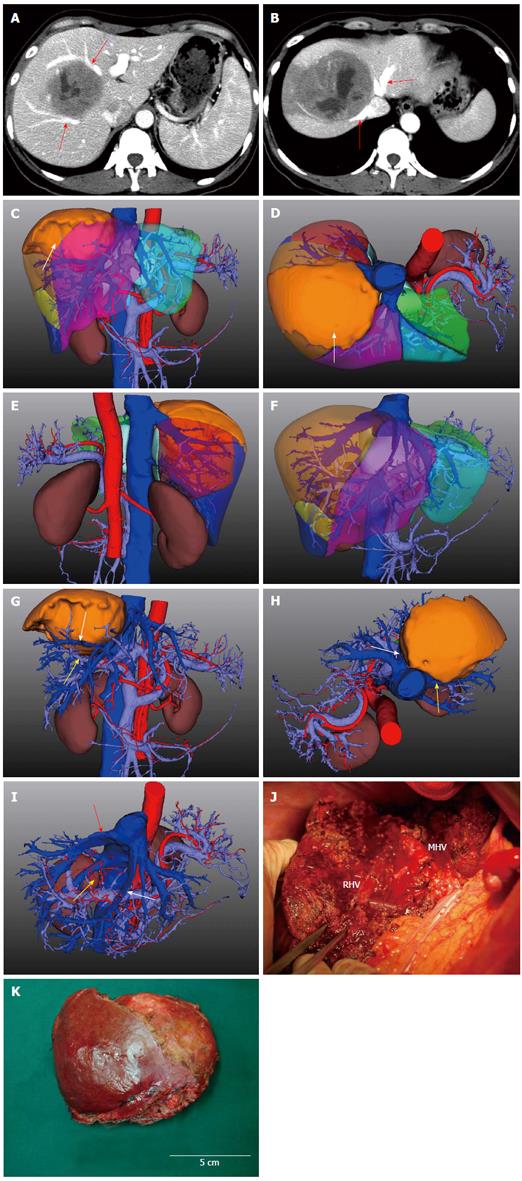Copyright
©The Author(s) 2015.
World J Gastroenterol. Apr 21, 2015; 21(15): 4607-4619
Published online Apr 21, 2015. doi: 10.3748/wjg.v21.i15.4607
Published online Apr 21, 2015. doi: 10.3748/wjg.v21.i15.4607
Figure 4 Digitized three-dimensional morphometric models.
A, B: Images obtained from a 48-year-old woman who underwent curative partial hepatic resection. Enhanced computed tomography (CT) images revealed a hypointense hepatocellular carcinoma nodule on delayed phase, measuring 8.5 cm in diameter, in segment VIII of the liver, the edges of which compressed the middle, right hepatic vein (RHV) and inferior vena cava (arrows); C-E: Integrated three-dimensional anterior, superior, and posterior view of the reconstructed model (tumor in yellow, white arrow); F: The eight Couinaud’s segments were demonstrated by different colors (tumor concealed); G: When eliminating the normal liver tissue, the relationship between the tumor nodule and adjacent pedicle structures was clearly demonstrated [the upper branch of the middle hepatic vein (MHV) is shown by the white arrow, the anterior branch of the right portal vein is shown by the yellow arrow]; H: The RHV (yellow arrow) and MHV (white arrow) were simulated consistent with the CT image; I: When the tumor mass was concealed, the compressive effect of the RHV (red arrow) and MHV (white arrow) was clearly demonstrated, the rims of the two main vascular branches were not eroded by the tumor tissue as the vascular wall was intact in the model. The nutritional pampiniform arteries of this huge tumor mass were also viewed (yellow arrow); J: Tumor resection surface showed the exposed surface of the RHV and MHV, the vascular wall of the two vessels was intact; K: The tumor specimen with intact encapsulation after resection.
- Citation: Tian F, Wu JX, Rong WQ, Wang LM, Wu F, Yu WB, An SL, Liu FQ, Feng L, Bi C, Liu YH. Three-dimensional morphometric analysis for hepatectomy of centrally located hepatocellular carcinoma: A pilot study. World J Gastroenterol 2015; 21(15): 4607-4619
- URL: https://www.wjgnet.com/1007-9327/full/v21/i15/4607.htm
- DOI: https://dx.doi.org/10.3748/wjg.v21.i15.4607









